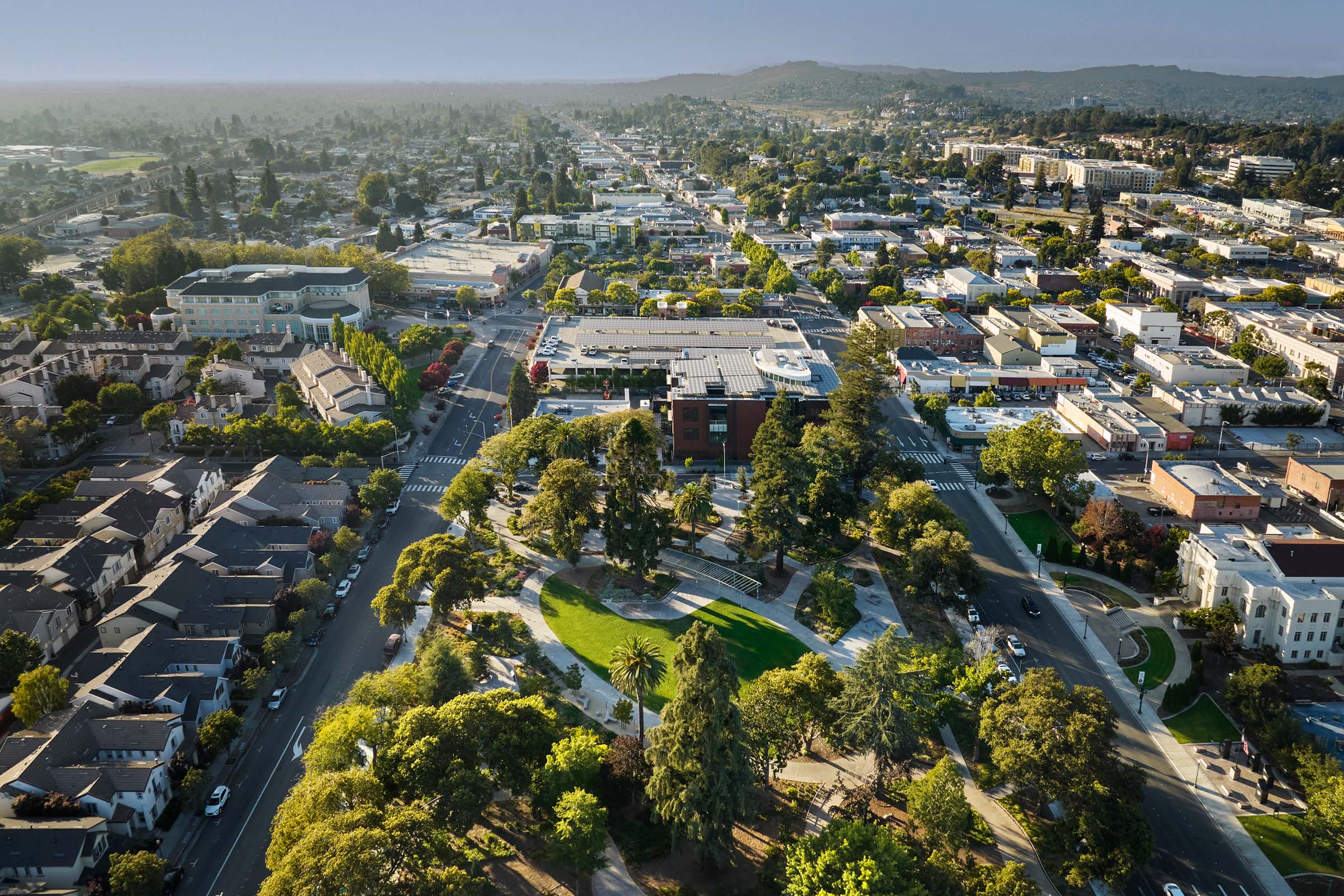Story at a glance:
- Climate haven cities are cities where residents are less likely to experience the worst effects of climate change.
- Generally they include having ready access to fresh water, climate responsive architecture, capacity for sustainable growth, and a willingness to welcome climate refugees.
As the effects of anthropogenic climate change worsen and extreme weather events increase in both frequency and severity, more and more people will be forced out of their homes and communities. Indeed, rising sea levels, prolonged drought, and catastrophic flooding have already displaced thousands around the world, and current estimates predict that approximately 1.2 billion climate refugees will exist by the year 2050.
These refugees and migrants will need someplace to call home, but this raises the question: Where can they go where they won’t be displaced again in a few years? After all, no city or community is entirely safe from the effects of climate change, right?
Even so, there are cities that, for one reason or another, are less likely to experience large-scale climate disasters, which have also taken measures to prepare for those that they may face in the future. These cities are known as climate havens.
What is a Climate Haven City?
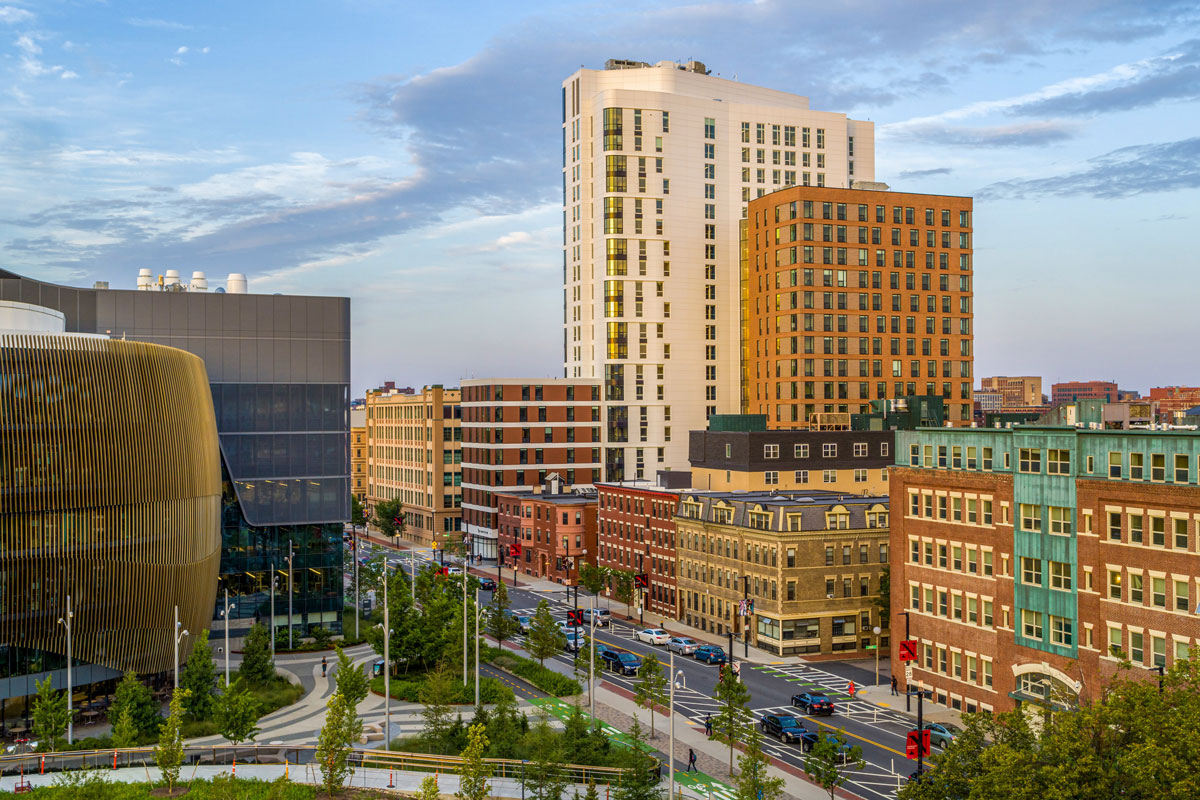
Potential climate haven cities are generally identified as those cities unlikely to experience severe weather events or disasters, and who actually have the capacity and resources to welcome climate migrants. Photo courtesy of Flaunt Boston & CUBE 3
In the fundamental sense, a climate haven city is any city that is likely to avoid suffering the worst effects of anthropogenic climate change, either through geographic location, smart infrastructure and planning choices, anticipatory disaster prevention strategies, or some combination of all three. This is, of course, not to say that these cities will entirely escape the impacts of our changing climate, just that they are less likely to experience catastrophic weather events, making them ideal destinations for climate migrants in the coming future.
Climate havens differ from so-called “recipient cities”—or those communities who find themselves unexpectedly hosting climate migrants, despite not having the resources to do so—in that they are actually prepared to receive those peoples displaced by climate change.
Why are Climate Haven Cities Important?
Climate haven cities are incredibly important in that they aid in mitigating both the housing and health crises spurred along by the overarching climate crisis.
With more than 200 million climate refugees estimated to be displaced by 2030 and more than one billion estimated by 2050, those cities spared from the worst that climate change has to offer must be prepared to receive the influx of migrants.
What Makes a City a Climate Haven?
Generally speaking there are five core factors that set potential climate haven cities apart from their less-prepared counterparts: geographic location, access to fresh water, regenerative/climate responsive architecture, capacity for sustainable growth, and a general willingness to accept climate migrants.
Geographic Location
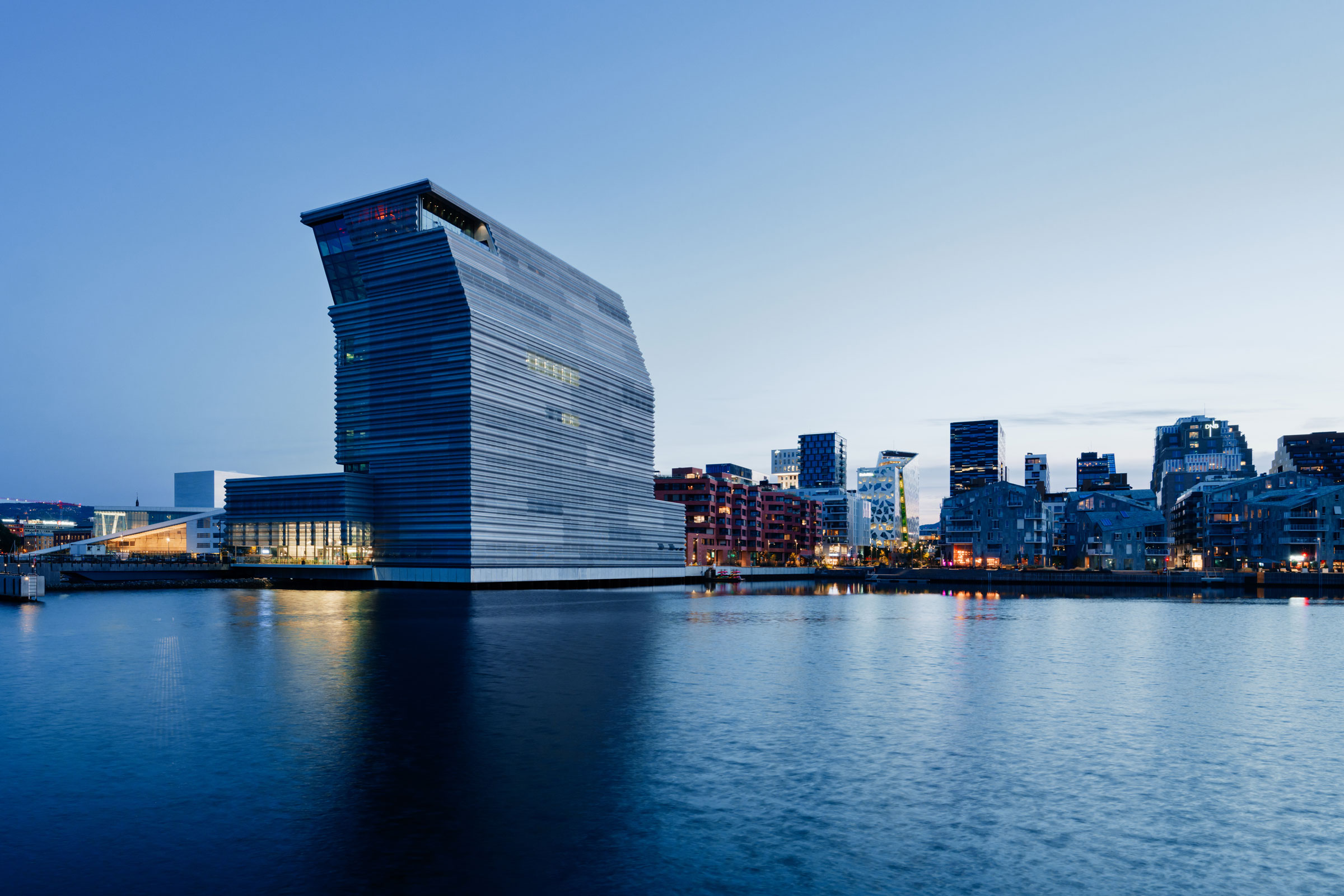
Due to both its favorable location and efforts at achieving sustainability, Oslo is considered to be a potential climate haven. Photo by Einar Aslaksen
While it’s true that things like policy and green infrastructure play a role in determining how resilient a city is to climate change, the largest contributing factor ultimately boils down to where in the world the city is located, as this influences the type of climate disasters they are likely to face. Potential climate haven cities are generally those in regions that are not likely to experience prolonged heat waves, wildfires, sea-level rise, or other highly destructive climatic events.
For the most part this means those cities within inland portions of the northern hemisphere—particularly the northern United States, Canada, Greenland, northern Europe, Scandinavia, and some portions of Siberia—are best suited to becoming climate havens. As it stands cities like Burlington (Vermont), Nuuk (Greenland), Toronto (Canada), Oslo (Norway), and Madison (Wisconsin) have been named as potential destinations for climate refugees.
Even those cities located slightly below the aforementioned regions have climate haven potential, provided they are far enough inland to protect against rising sea levels and subsequent flooding. Asheville (North Carolina) and Knoxville (Tennessee), for example, are considered to have high climate resiliency based on a number of factors.
Ready Access to Fresh Water
In order for a city to be considered a climate haven, it must have abundant and ready access to the most important resource on the planet: fresh, clean water. The reasons for this should be relatively self-explanatory. After all, all living things need water to survive, and a mass influx of migrants means increased municipal water usage. If cities do not have reliable access to the quantity of fresh water necessary to support surges in population growth, it creates a whole new set of social and health issues.
Ann Arbor, Michigan, for example, is one such city that has been identified as a potential climate haven, in large part due to its favorable climate and proximity to reliable freshwater reservoirs.
Regenerative & Climate Responsive Architecture
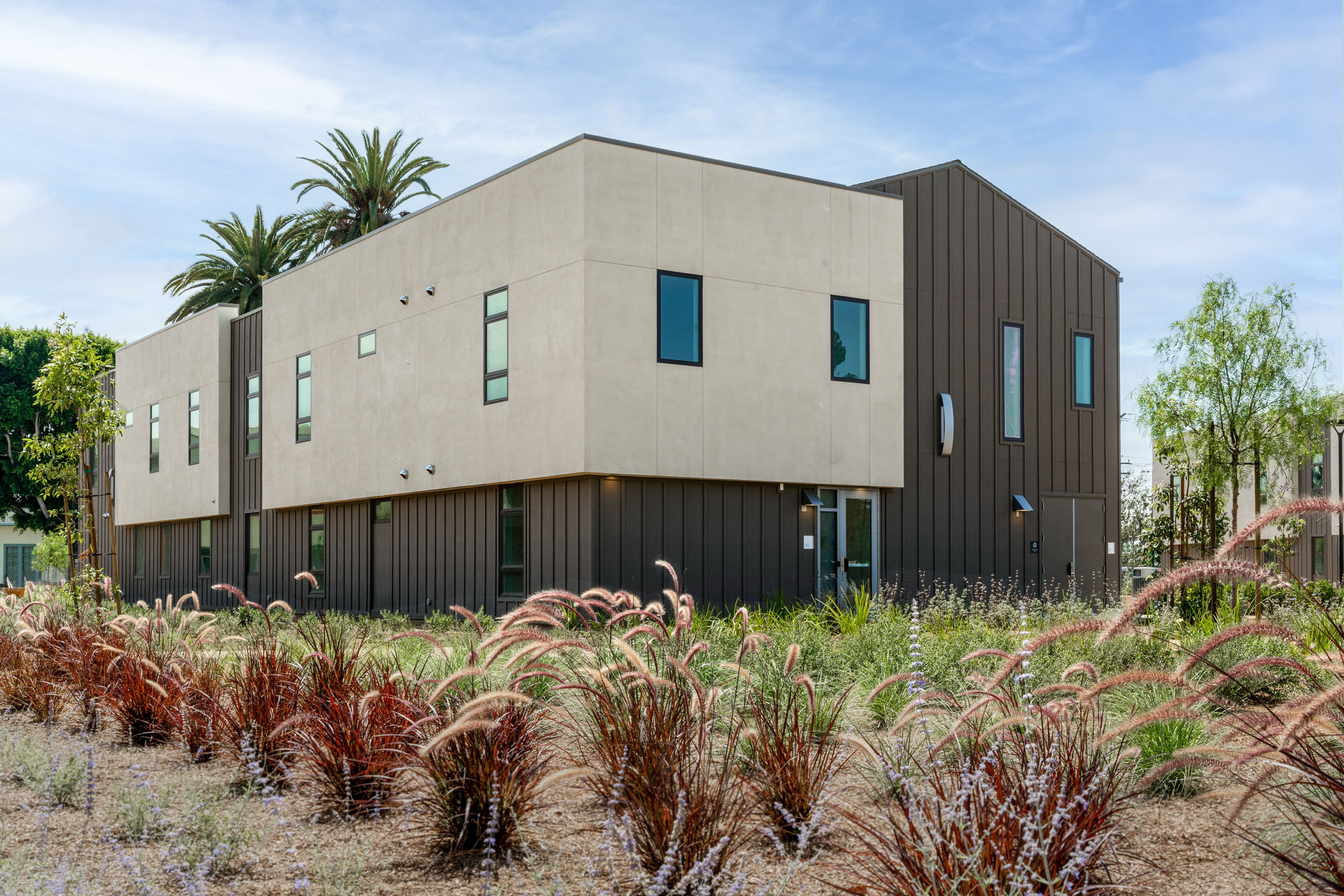
Architecture that is capable of adapting to changing climatic conditions and which helps regenerate natural habitats is crucial to becoming a climate haven city. Photo by Ric Berryman
When it comes to preparing the built environment for climate change, cities should look to regenerative and climate responsive architectural strategies.
Regenerative design in architecture describes a specific methodology or philosophy that views the built environment as an extension of the natural environment and seeks to construct buildings with a positive impact on their respective ecological communities. Rather than simply reduce their consumption of energy or resources, regenerative buildings actively give back more than they take by mimicking the restorative biological systems found in nature.
Climate responsive architecture, on the other hand, is an architectural approach that focuses on designing energy-efficient buildings uniquely suited to the climate in which they are constructed. By taking into account things like seasonality, solar pathing, natural shading, ambient humidity, and annual rainfall patterns, climate responsive buildings and infrastructure work with, rather than against, the local climate to provide occupant comfort using the least amount of energy possible.
Both of these approaches are crucial in preparing towns and cities for the increasing frequency of severe weather events linked to climate change.
Capacity for Sustainable Growth
Furthermore, a prospective climate haven must actually have the capacity for sustainable growth as it welcomes more and more people into its midst. This goes for everything from affordable housing and infrastructure to economic opportunities and square footage (be it vertical or horizontal) for food production.
For this reason, many potential climate havens are identified as post-industrial cities that were originally built to house more people than currently live there, but have since seen significant population decline in recent years—these cities are often referred to as “legacy cities.”
In the United States, this includes cities like Buffalo (New York), Duluth (Minnesota), and Minneapolis (Michigan), all of which have labeled themselves—or been labeled—potential climate destinations.
Willingness to Welcome Climate Migrants
Finally, a climate haven city must express the desire and willingness to welcome climate migrants with open arms. This helps prevent—or at the very least provides less of a foothold for—xenophobia, fear-mongering, and the discriminatory treatment of vulnerable migrant populations.
At the same time, cities marketing themselves as climate havens must take appropriate measures to ensure their efforts to accommodate newcomers don’t come at the expense of vulnerable populations that already exist in their communities.
What Can Cities Do to Prepare for Extreme Weather?

Photo courtesy of ROCKWOOL North America
As it stands few true climate havens currently exist, and even potential havens are limited, but that’s not to say cities and communities around the world can’t take measures to better prepare for extreme weather in the interim.
Current climate data suggests that there are six weather-related disasters predicted to occur with greater frequency and severity as the climate crisis worsens: heatwaves, wildfires, tornadoes, hurricanes, storms, and flooding.
Aside from devising effective evacuation protocols and disaster response efforts, cities can take the following preventative measures to prepare for the most common extreme weather events.
Heat Waves
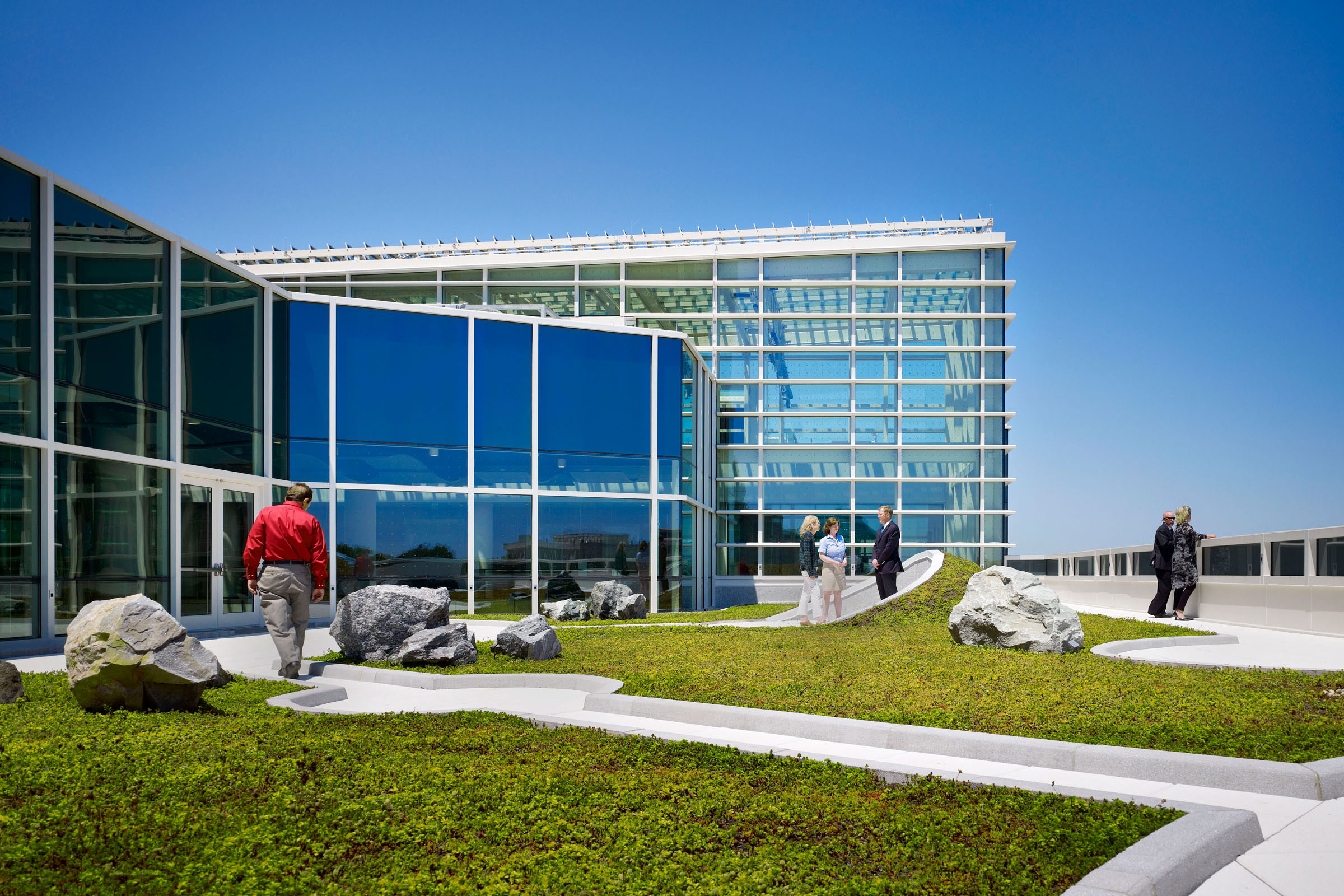
The Green Square Complex in Raleigh, North Carolina features a 10,000-square-foot green roof and makes use of white-colored surfaces to help beat the heat. Photo by Nick Merrick
One of the most widespread climate change–related threats to cities is prolonged, high-intensity heat waves, which can pose a serious health risk to humans and other animals. Rising global temperatures, combined with the propensity of urban areas to experience higher average temperatures than rural areas—the so-called “heat-island effect”—puts nearly 41 million people in the US alone at increased risk of fatal heat stroke.
Green Roofs & Living Walls
One way cities can help mitigate the heat-island effect is by installing green roofs and living walls on new construction and existing buildings. Green roofs—or those roofs which feature a vegetative layer—help remove heat from the air and can be 30 to 40℉ cooler than conventional rooftops, reducing city-wide ambient temperatures by as much as 5℉, according to the EPA.
Living walls—or walls that act as vertical planters—can also aid in reducing temperatures by intercepting solar energy and through the process of evaporative cooling.
Both green roofs and living walls help passively regulate interior temperatures as well as exterior temperatures, reducing a building’s air conditioning use by as much as 75%. Some of the world’s most sustainable cities, like Copenhagen, have already realized just how beneficial green roofs can be and enacted mandatory green roof policies for all new and existing buildings with suitable roofs.
Expansion of Green Spaces & Tree Cover
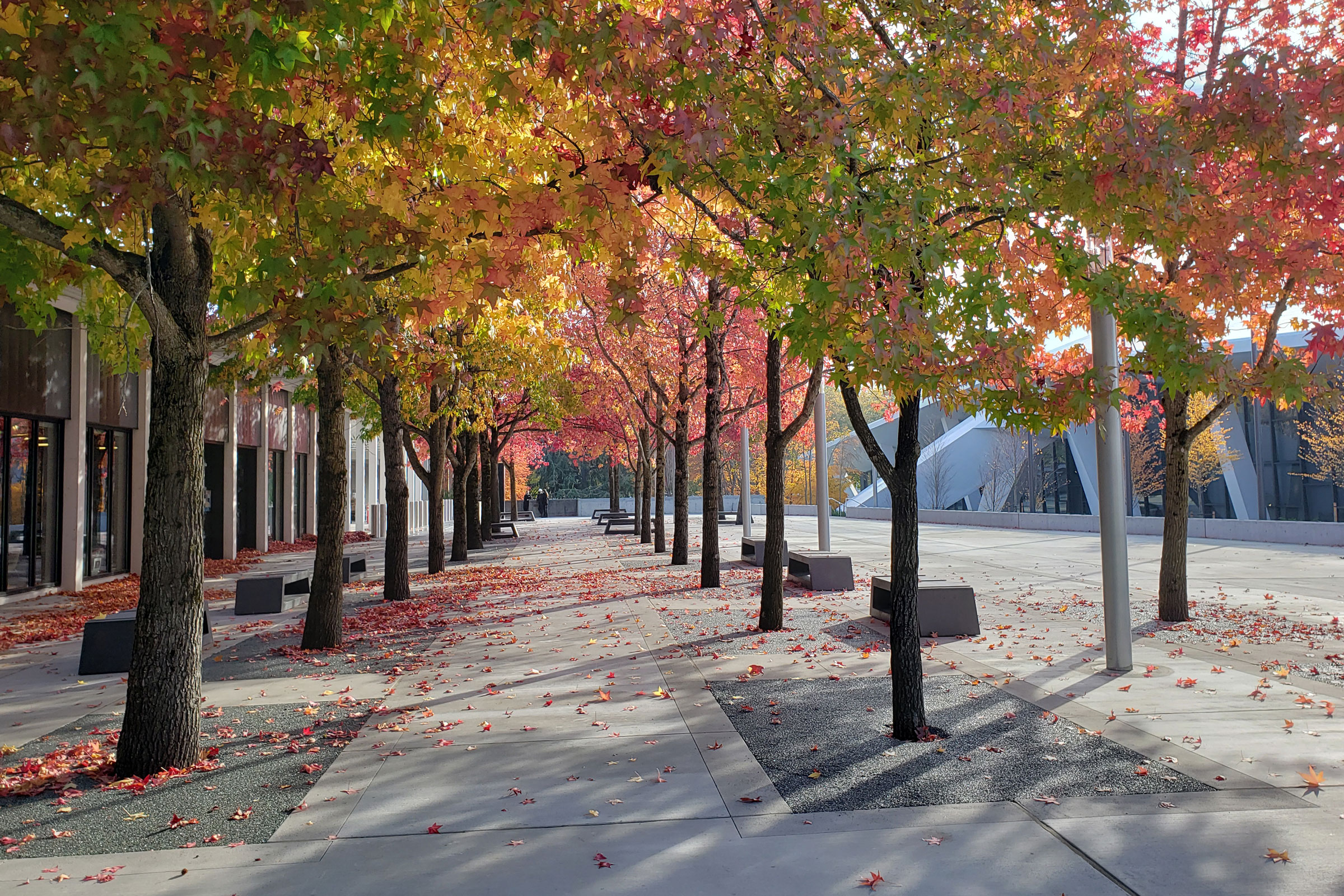
Trees help reduce the heat-island effect by providing shade and reflecting solar energy. Photo courtesy of Swift Company
Similarly, the expansion of ground-level green spaces—such as parks, gardens, and undeveloped natural habitats—also serves to reflect solar energy and lower temperatures via evapotranspiration, as does the planting of trees along roadways and sidewalks, which has the added benefit of providing shade to pedestrians and building surfaces.
Solar Reflective Coatings & Cool Infrastructure

Westcoat offers both solar reflective waterproofing and concrete coating systems. These systems help combat the urban heat island effect by lowering surface temperatures. Photo courtesy of Westcoat
That said, it isn’t feasible to cover an entire city in green spaces and vegetation, nor can every roof support a garden—but that doesn’t mean those spaces left uncovered can’t do their part in reflecting solar energy. Cool roofs, for example, are a low-maintenance and more versatile alternative to green roofs, of which use solar reflective coatings to redirect solar energy instead of absorbing it.
“Just as wearing light-colored clothing can help keep a person cool on a sunny day, cool roofs use solar-reflective surfaces to maintain lower roof temperatures,” Lon Bauer, product development manager at APV Engineered Coatings, previously wrote for gb&d. Thanks to their use of reflective coatings, light-colored cool roofs can stay at least 50℉ cooler than traditional dark-colored roofs, according to data gathered by the DOE.
Of course, solar reflective coatings can be applied to more than just roofs—in fact, roads, sidewalks, and other paved surfaces can also benefit from these coatings. APV Engineered Coatings and Westcoat, for example, are leading manufacturers of protective coatings and offer several solar reflective coatings with high SRI values that may be applied to a multitude of surfaces.
Wildfires

As wildfires and other severe climate events become more frequent, it becomes increasingly important to design with disaster resiliency in mind. Photo courtesy of ROCKWOOL North America
Over the last few years our world has seen an increasing amount of devastating wildfires—most notably in Australia, California, and now Maui—exacerbated in size and severity by increasing temperatures and longer periods of drought. Indeed, recent data suggests that today’s wildfires are burning nearly twice as much tree cover as they were two decades ago, resulting in widespread loss of life and property.
Fireproof the Built Environment
For those cities located in regions where wildfires are becoming more frequent, district-wide action must be taken to fireproof the built environment as much as possible. This means going beyond the minimum requirements set by official building codes and prioritizing fire-resistant materials in all new building projects or upgrades to existing ones.
“Specifying fire-rated assemblies and fire-resistant materials for the building envelope is the best strategy for limiting the spread of fire. Best practices today demand more. Fire safety must be accounted for early in the design process,” Brendan Knapman, head of product management for ROCKWOOL, previously wrote for gb&dPRO. “This is especially true for WUI zones, where a holistic approach needs to be applied.”
Everything from roofs, walls, insulation, floors, and even siding can be constructed from materials with improved fire-resistance compared to their traditional counterparts.
Prescribed Burns
Fireproofing homes and other buildings is important, but it doesn’t wholly eliminate the risks associated with wildfires—and while it isn’t entirely possible for cities to prevent wildfires from starting, there are ways to prevent them from spiraling out of control. How? With more fire.
While it may seem counterintuitive, prescribed burns—or those intentionally set fires used for forest management and hazard reduction—are an age-old tradition historically practiced by many Indigenous peoples in both North America and around the world. These controlled fires are used to clear dense vegetation and brush as a means of reducing the amount of dry, flammable material that fuels devastating wildfires.
Tornadoes & Hurricanes
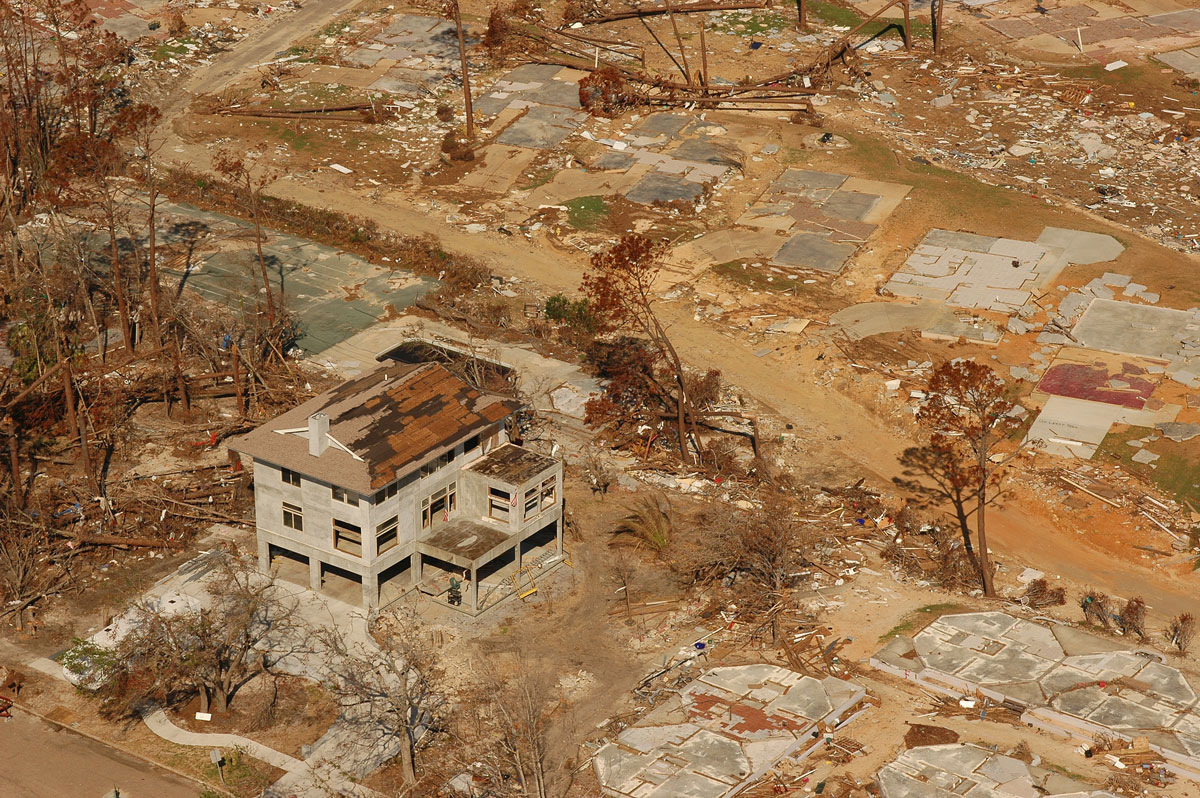
This concrete house withstood Hurricane Katrina and was one of very few properties left standing after Hurricane Katrina hit Mississippi. Photo courtesy of ICFMA
As global temperatures continue to increase, tornadoes and hurricanes are expected to become more violent and more widespread—and while there’s nothing cities can do to prevent these disasters from happening, there are ways of effectively reducing their death toll, as well as their impact on buildings and infrastructure.
Wind-Resistant Infrastructure
When it comes to tornadoes and hurricanes, durability is what’s important, especially in terms of wind-resistance. Often this means going beyond the standards set by the International Building Code.
One way to improve tornado resistance in buildings is to ensure they are built with a continuous load path—that is, a series of reinforced connectors that bind every element together, similar to a chain. In the event of high winds, this continuous load path will help prevent individual pieces of a building from being ripped away by more evenly distributing the wind’s force.
Strong, durable materials are another way to improve resistance to tornadoes and hurricanes. Insulated concrete forms (ICFs) for example, have an extremely high wind-resistance that allows them to, at minimum, withstand 150 mph winds. This is largely due to their improved racking, bending, and compression strength, as well as their high-resistance to impacts from wind-borne debris.
Safe-Rooms
In order to reduce the loss of life during tornadoes, cities can also require that all commercial structures, apartments, and other large buildings to have concrete safe-rooms for people to shelter in.
Such rooms offer near-absolute protection during high-wind disasters and are a recommended addition for buildings in tornado-prone regions, according to FEMA.
Storms & Flooding
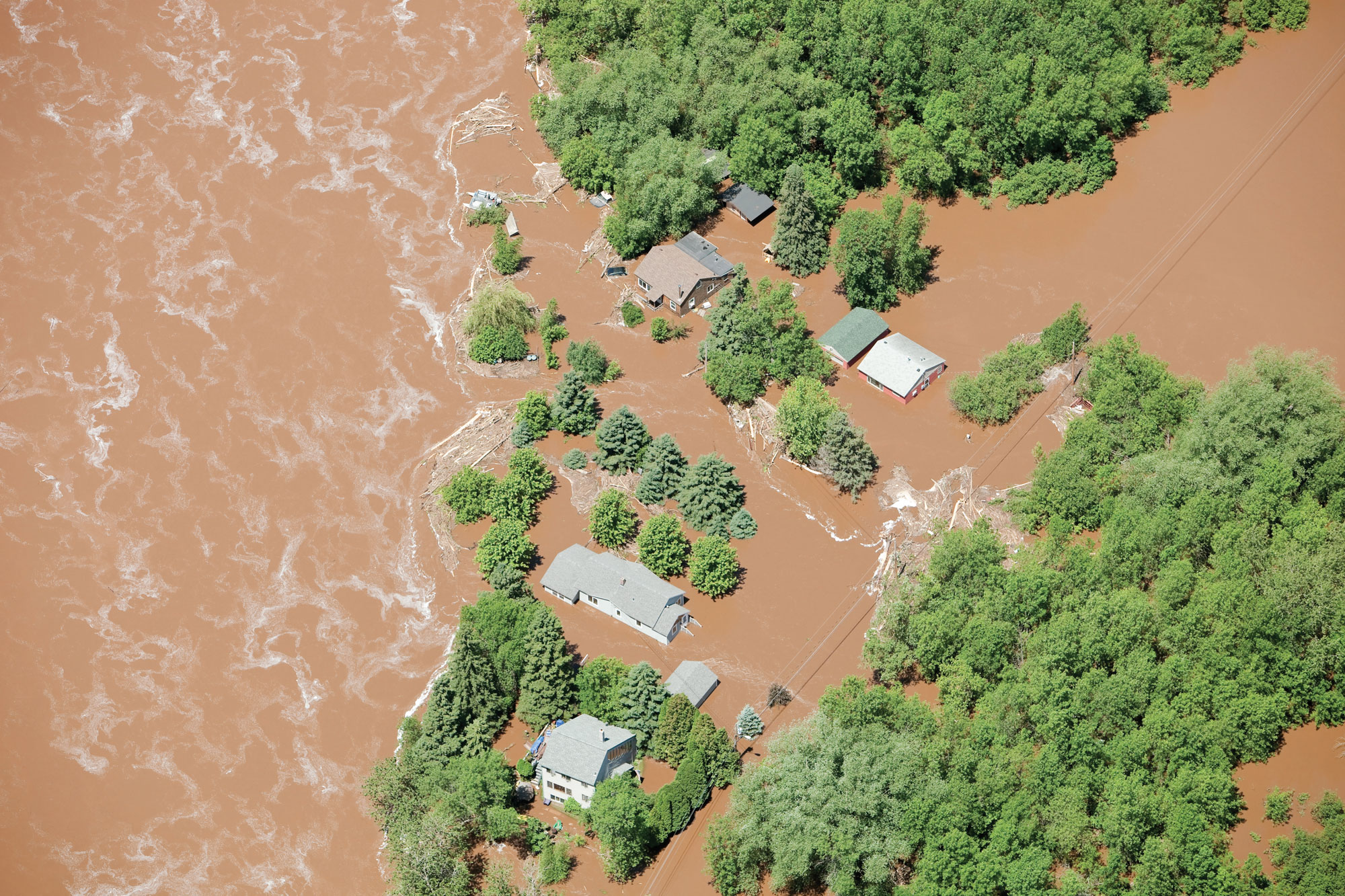
Photo from iStockphoto.com
As the intensity and frequency of storms—be they tropical or otherwise—increases, so does the risk of urban flooding. To reduce the risk of injury, death, property damage, and economic loss, cities can look to the following infrastructural features:
Levees, Dikes, & Seawalls
Generally speaking coastal communities are the most at risk for flooding—either due to rising sea levels, tsunamis, or storm surges—though riverine communities may also experience flooding after heavy precipitation. And while these phenomena aren’t exactly preventable, there are three main ways to block or slow water before it reaches populated areas: levees, dikes, and seawalls.
Levees and dikes may be constructed along both rivers and coastal plains; they function similarly in that they are long (usually) artificial embankments designed to prevent urban flooding after heavy rainfall or low-category tropical storms. Seawalls, on the other hand, are large, vertical or near-vertical walls built exclusively along coastal shorelines, whose purpose it is to withstand and redirect the force of waves, tsunamis, and storm surges.
Permeable Surfaces & Green Spaces
That said, levees and seawalls don’t prevent precipitation from falling within the city itself, which can still lead to flooding in certain areas. One of the largest non-climate related factors responsible for urban flooding is the overabundance of non-permeable surfaces like roadways, sidewalks, and other paved surfaces. Rather than absorbing water, these materials allow water to sit on top of them, making it easier for standing water to accumulate.
This can be mitigated in part by replacing non-permeable surfaces with either permeable alternatives—porous pavement, for example—or green spaces, both of which soak up water and return it to underground aquifers and water tables. Green roofs, rooftop gardens, living walls, and other green spaces also aid in absorbing excess rainwater that would otherwise flow into the street.
Stormwater Collection & Management Systems

Gravel dunes and a terraced amphitheater aesthetically mitigate storm events, and bioretention meadows naturally filter runoff. Photo by Marion Brenner
Of course, even soil eventually becomes inundated to the point where it can no longer absorb water effectively, which is why it’s also important for cities to devise efficient stormwater management systems capable of collecting or redirecting water away from the built environment.
Building-scale rainwater catchment tanks, for example, help reduce stormwater runoff into streets and waterways by allowing structures to collect precipitation as it falls, after which it may be stored, filtered/treated, and reused for irrigation or plumbing purposes.
Restoring wetlands, creating stormwater ponds, and expanding bio-swales/bio-retention areas are other ways in which cities can help manage and redirect rainwater runoff to prevent urban flooding.
In Conclusion
Conceptually climate haven cities seem like the answer to the incoming climate-induced migrant crisis; in reality, however, things aren’t so simple. It’s true not every city will be as severely impacted by climate change, but no city will entirely escape it, either. Thus, the notion of a “climate haven” can be somewhat misleading, as it implies immunity from weather-related disasters, when that isn’t actually the case.
Even so, it’s undeniable that certain cities—particularly those located in northern climes—will start to see an influx of climate migrants in the very near future, and that some of these cities will be more suited to weathering changing climatic conditions compared to others.
Fortunately there is much that can be done to prepare these cities infrastructurally, economically, and socially for the challenges they’ll face. Funding green building operations, setting carbon reduction goals, expanding affordable housing, and improving disaster prevention and response strategies are just a few measures climate destination cities can take.

